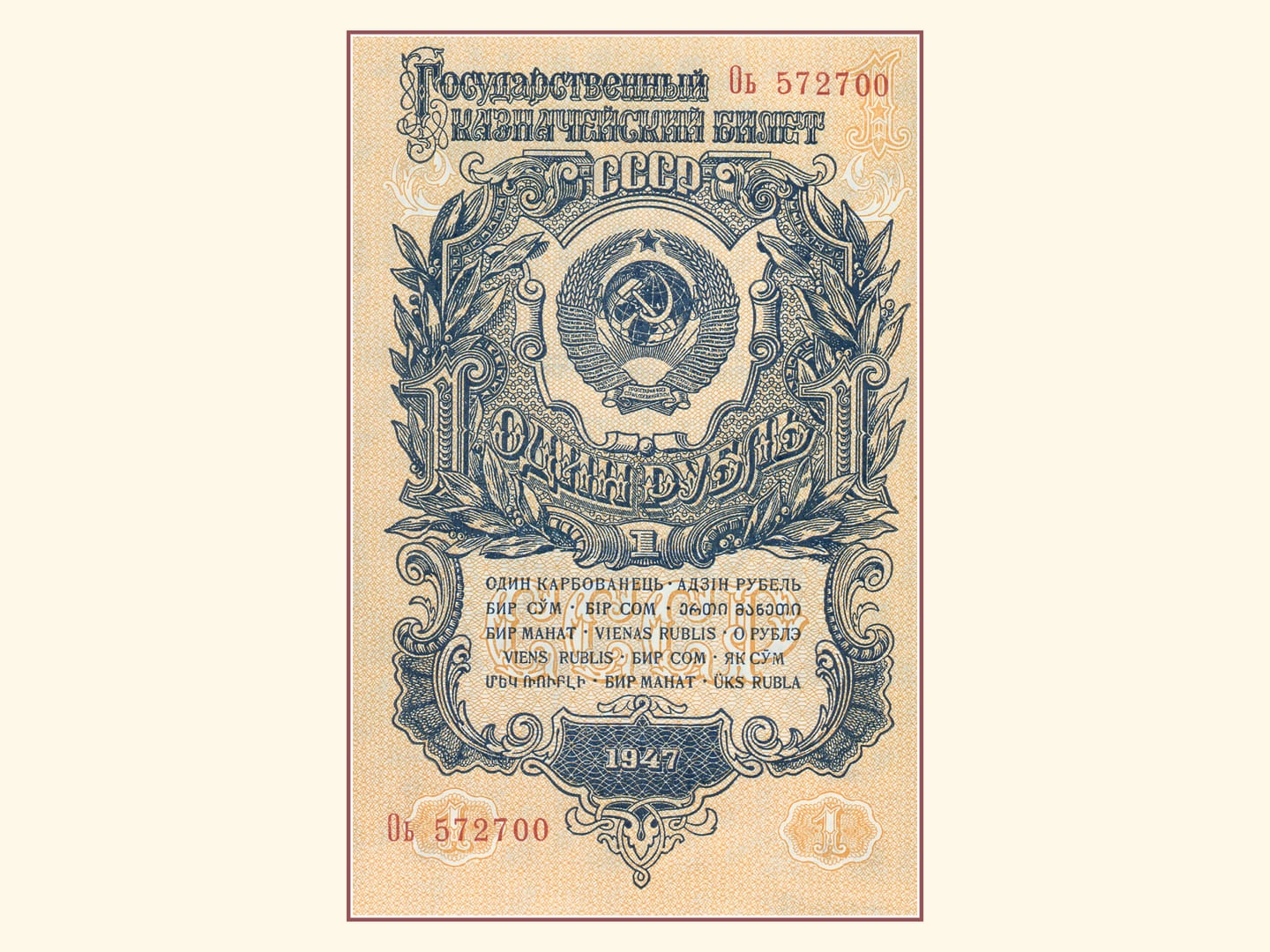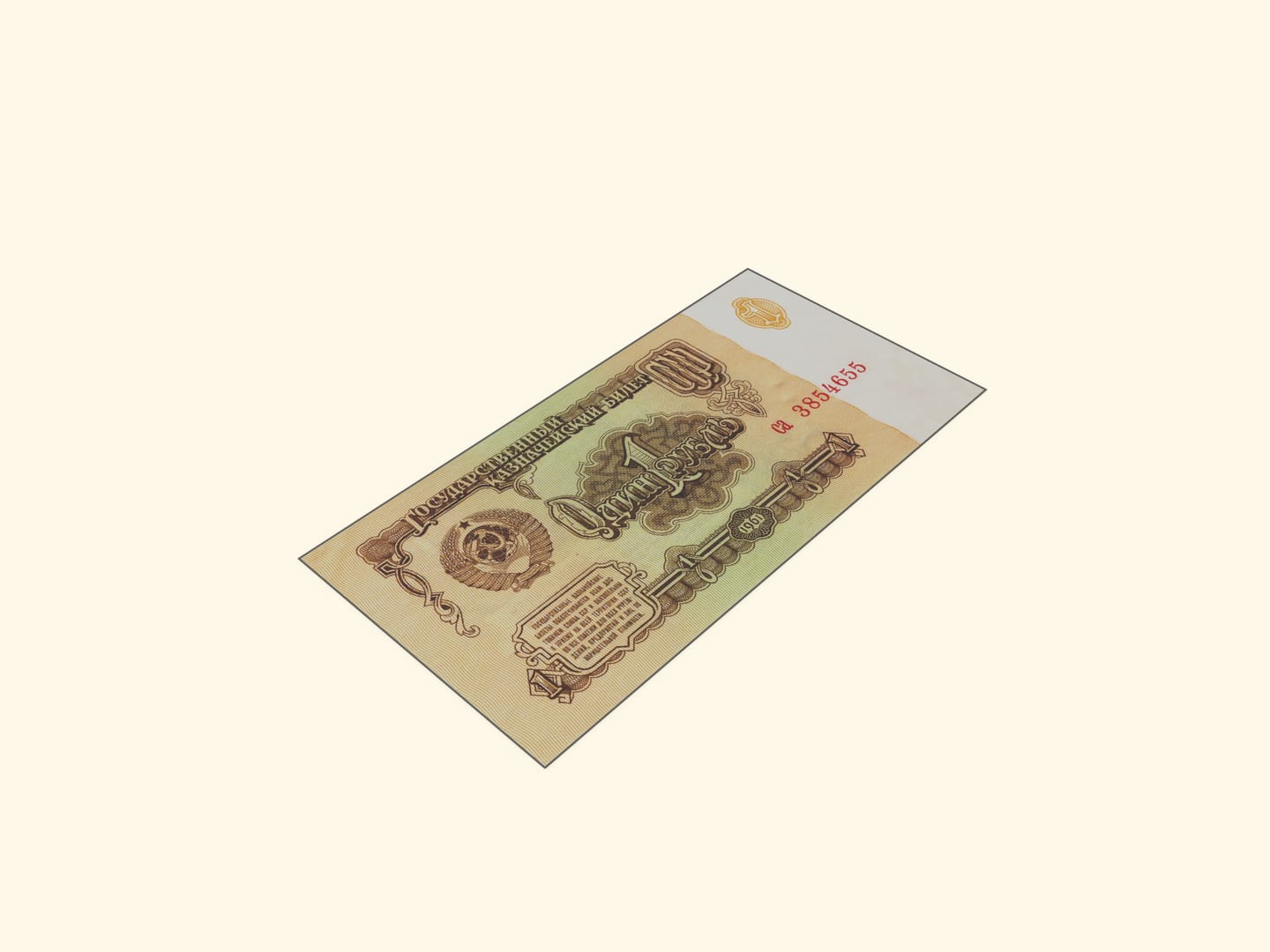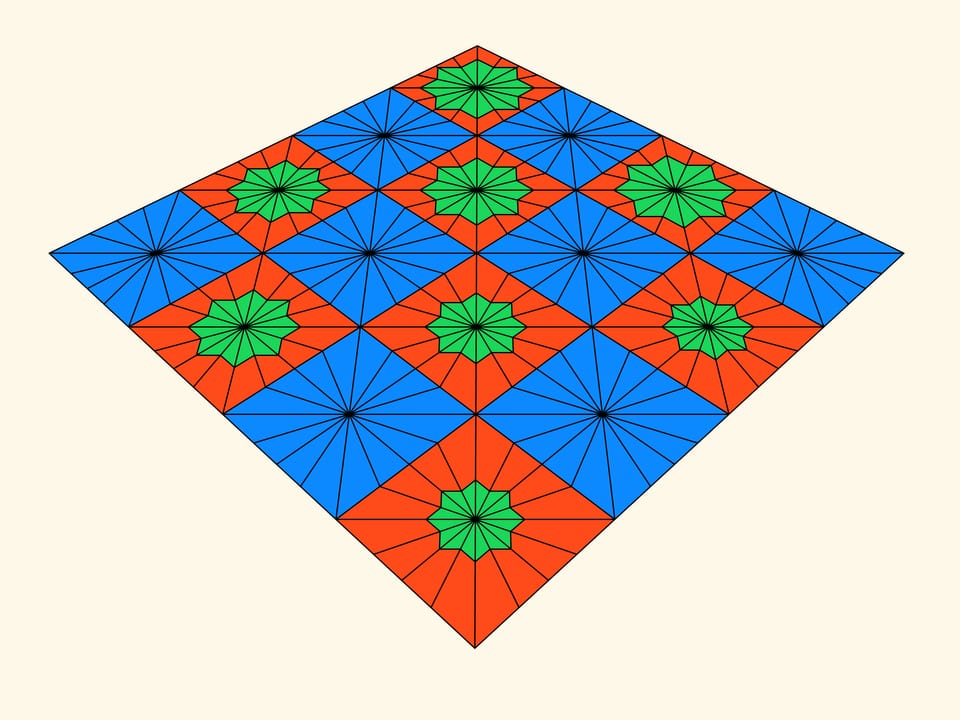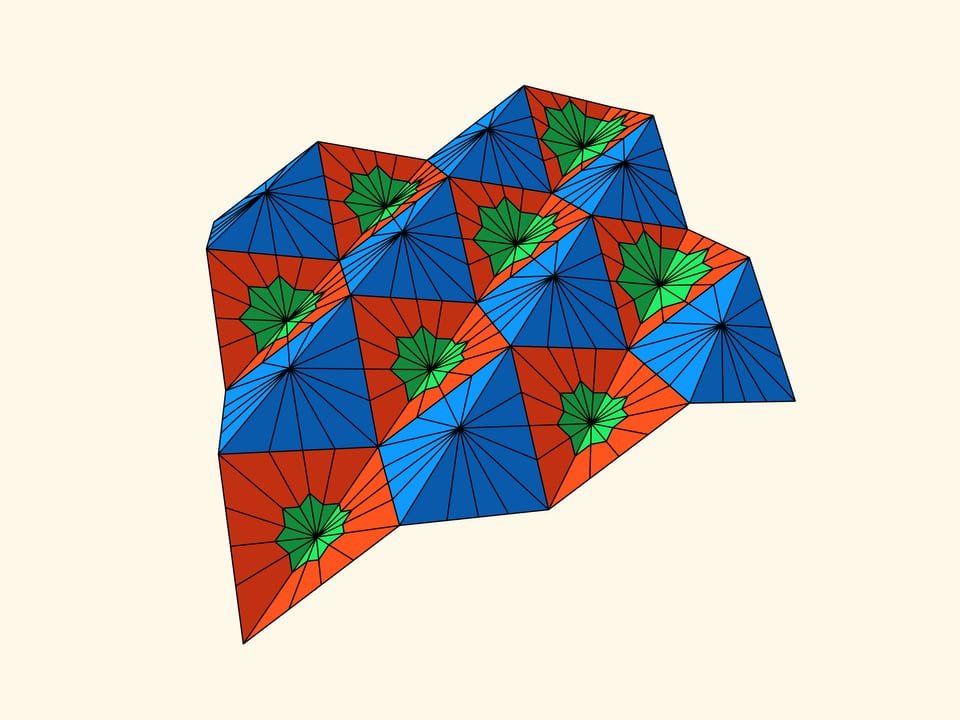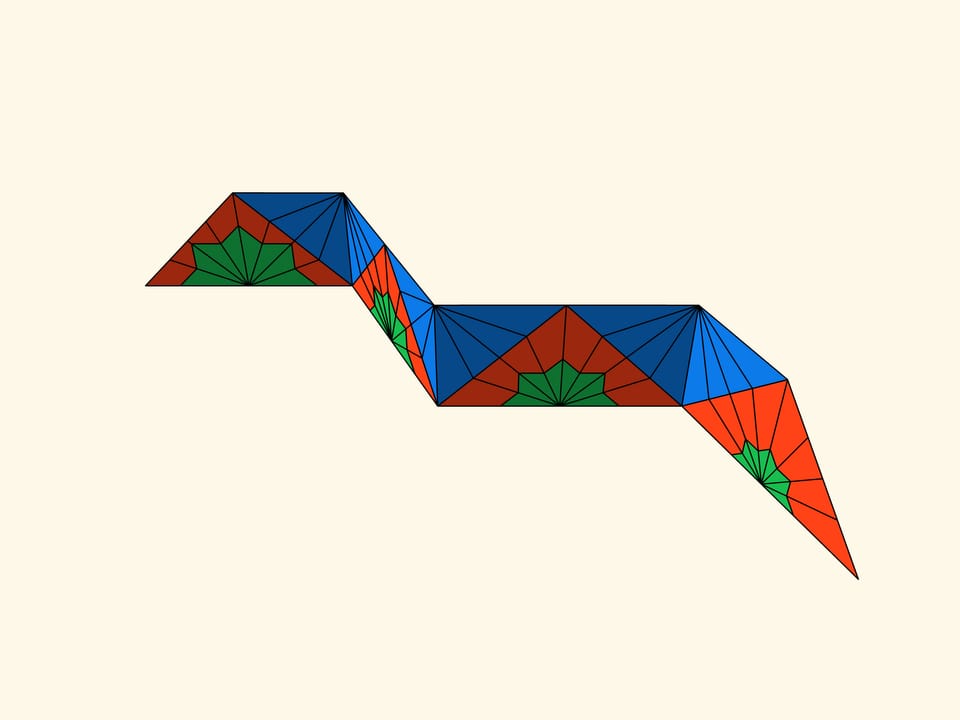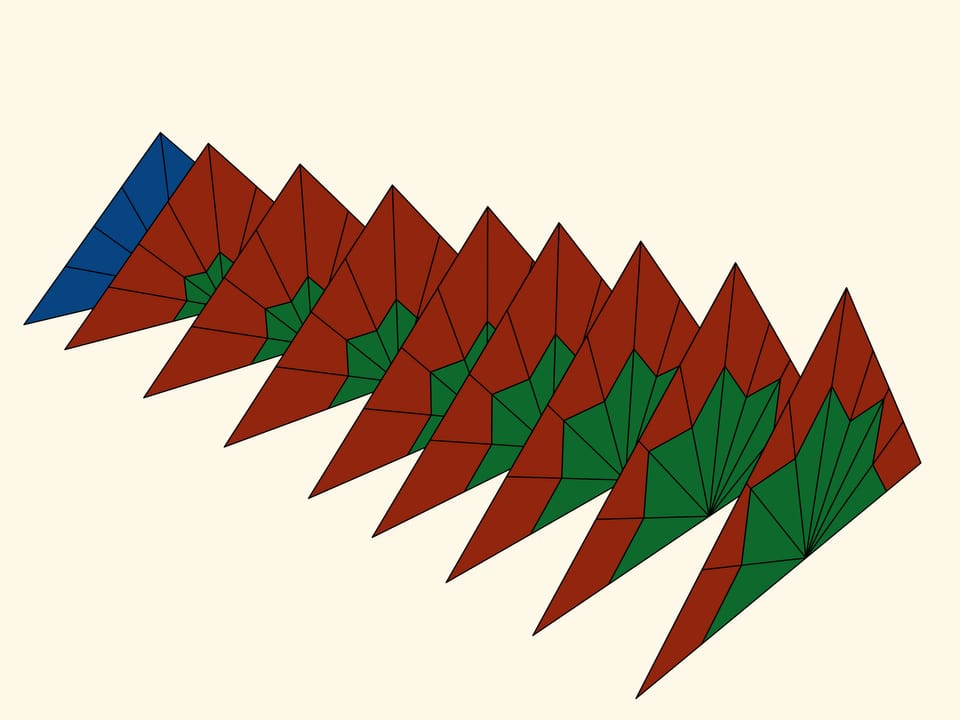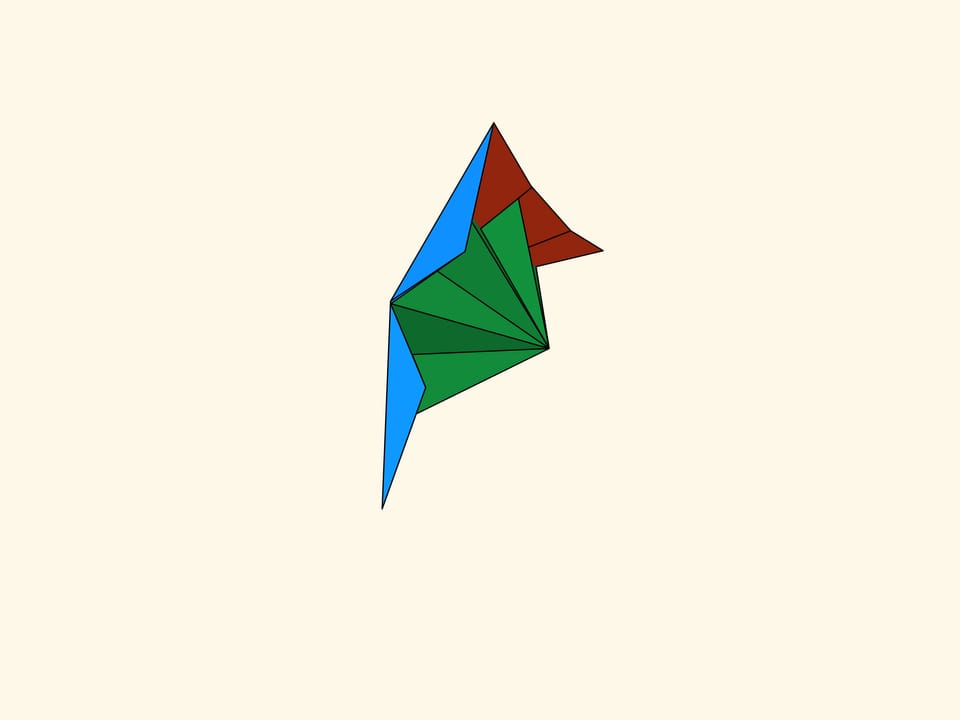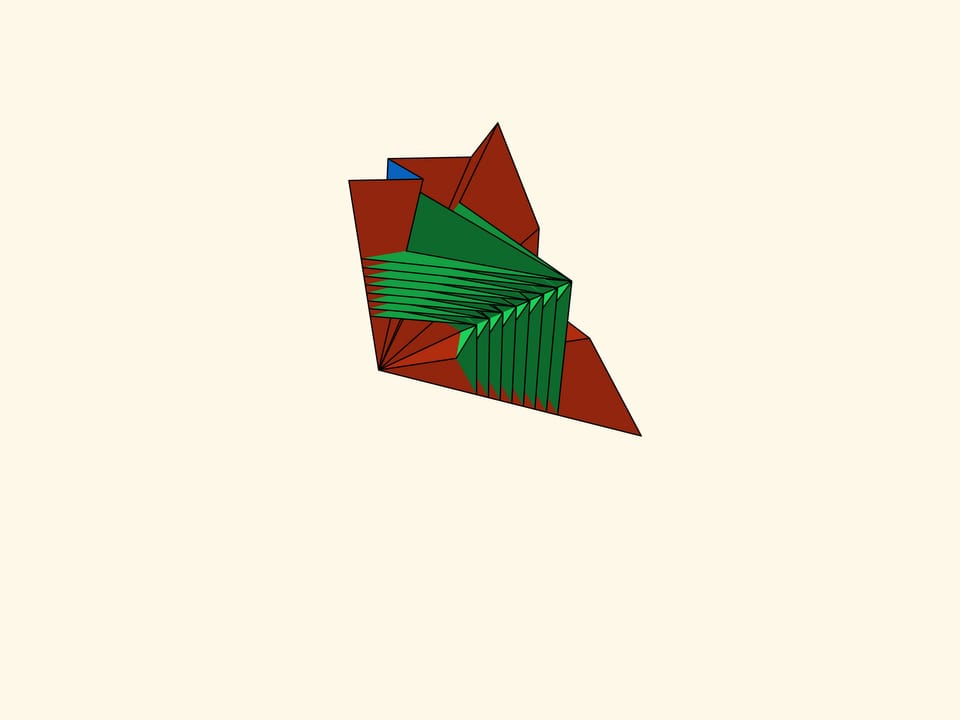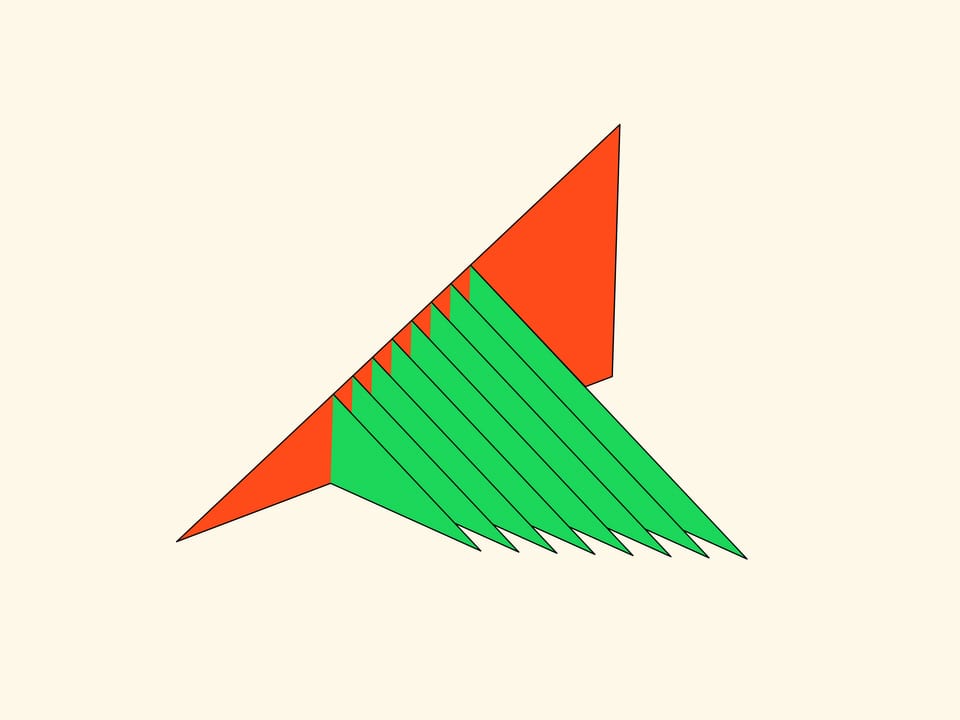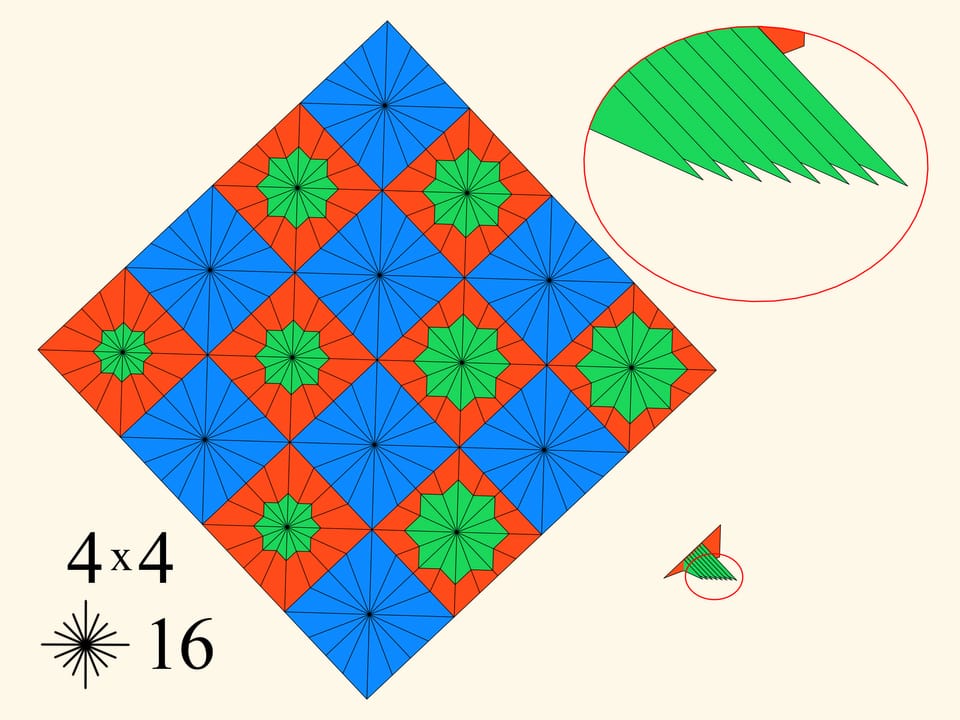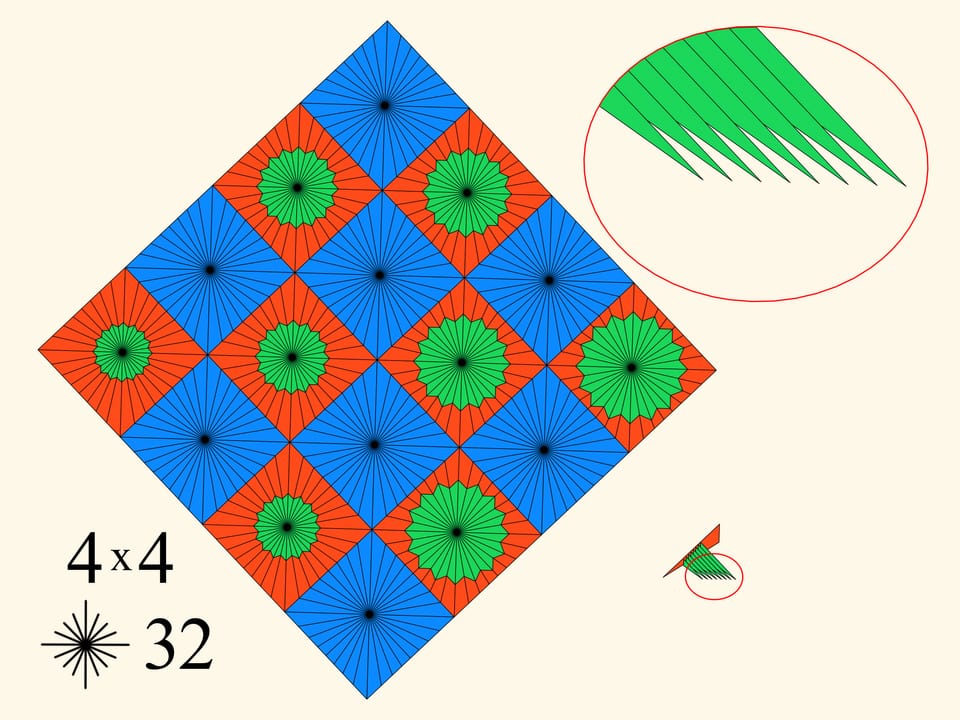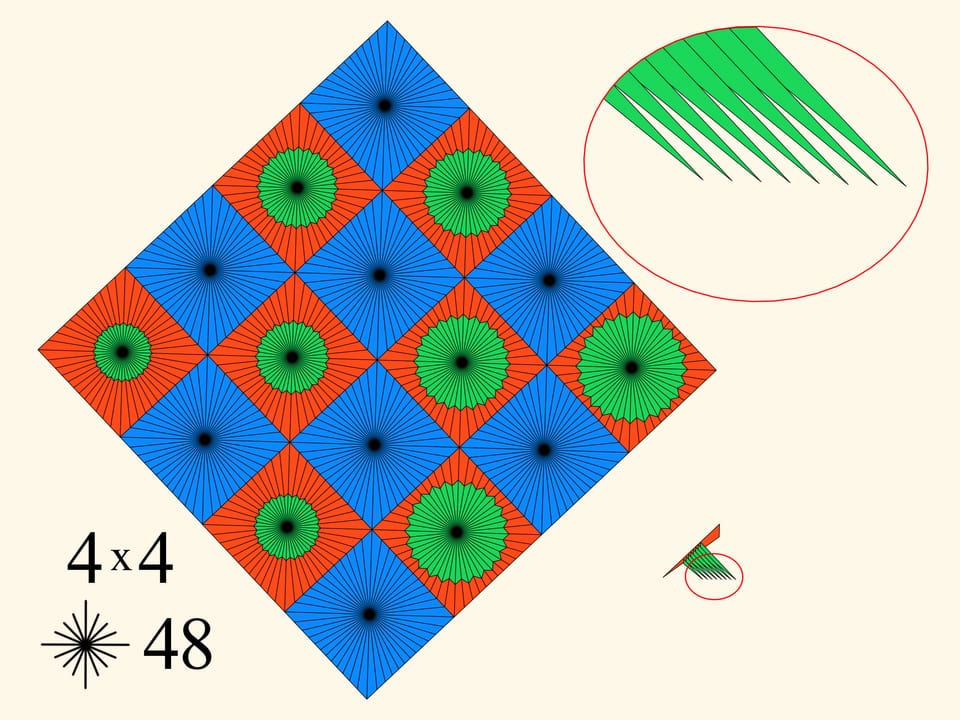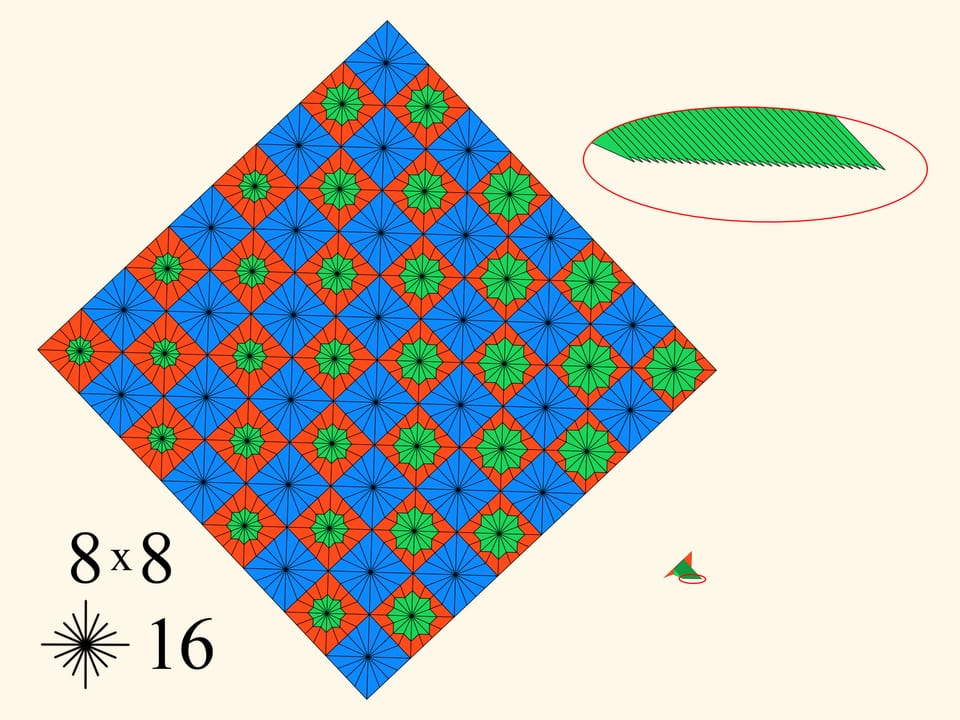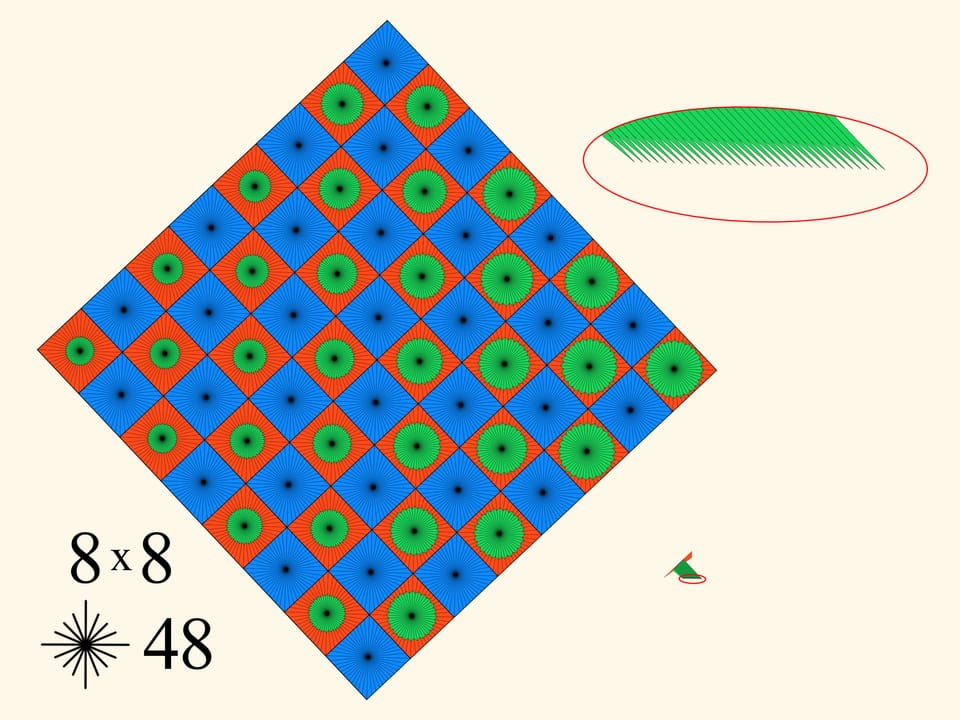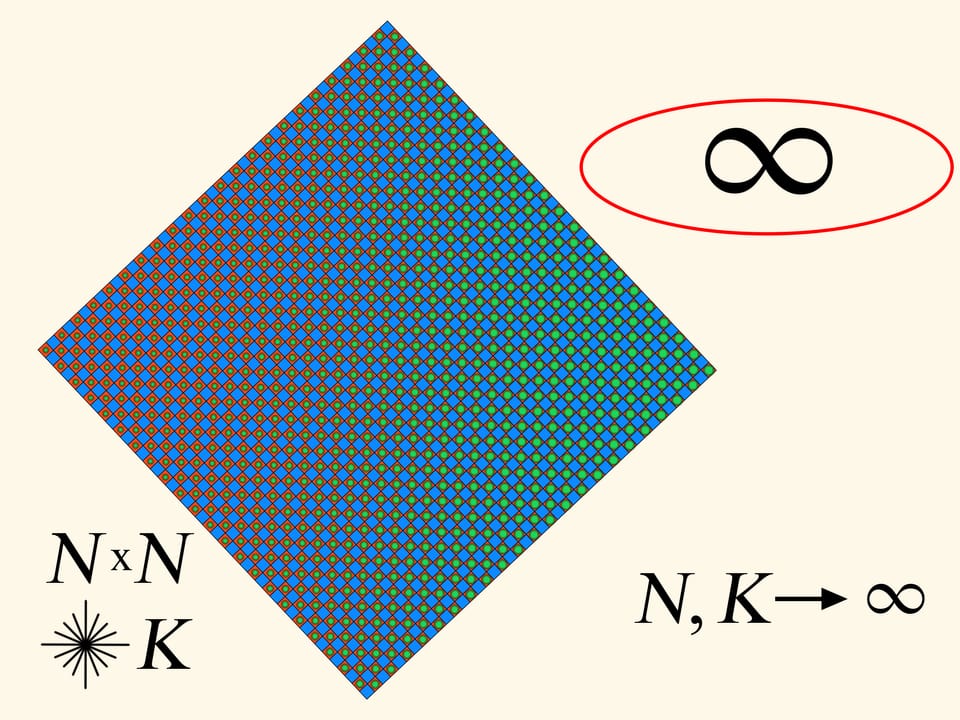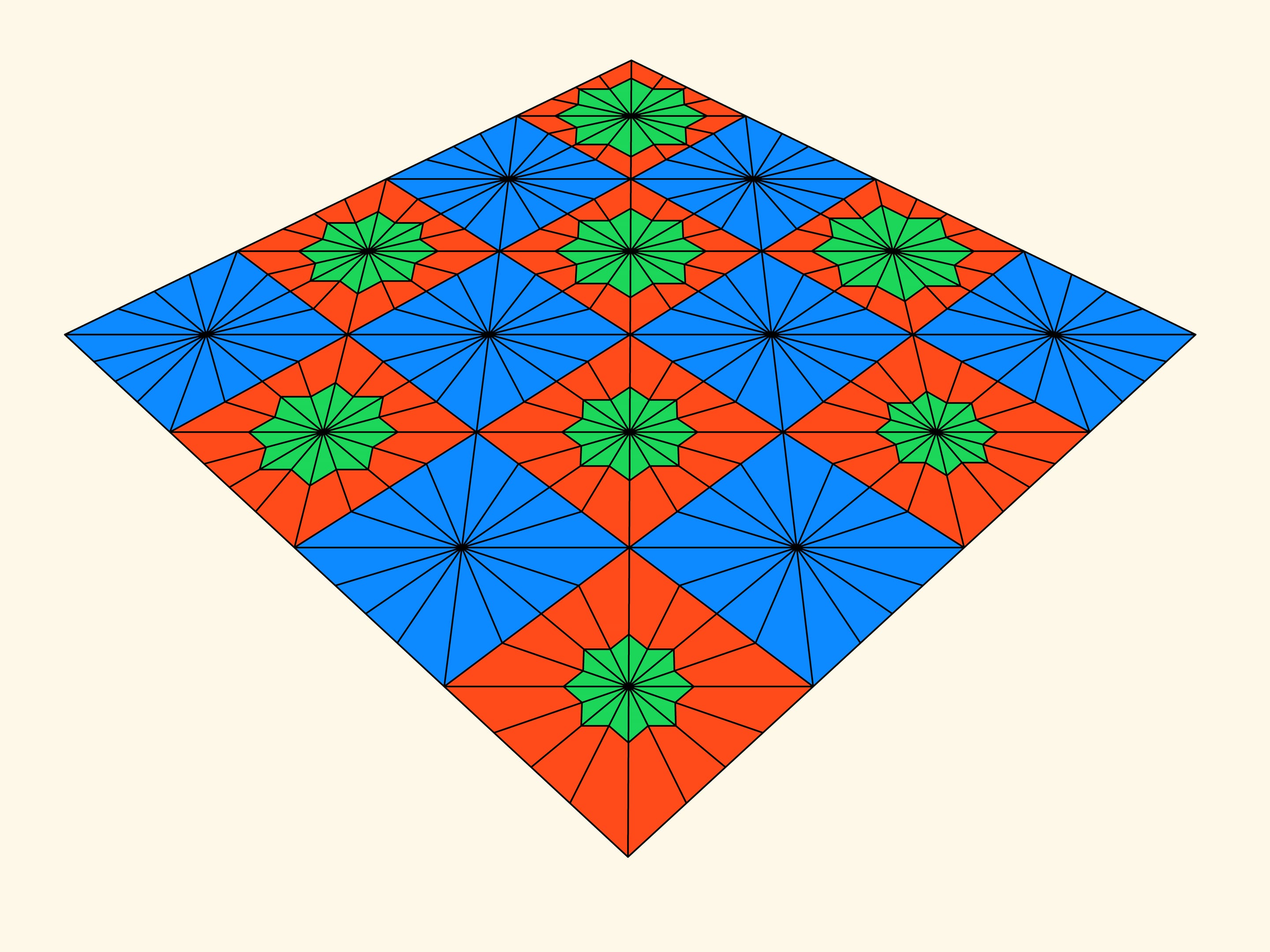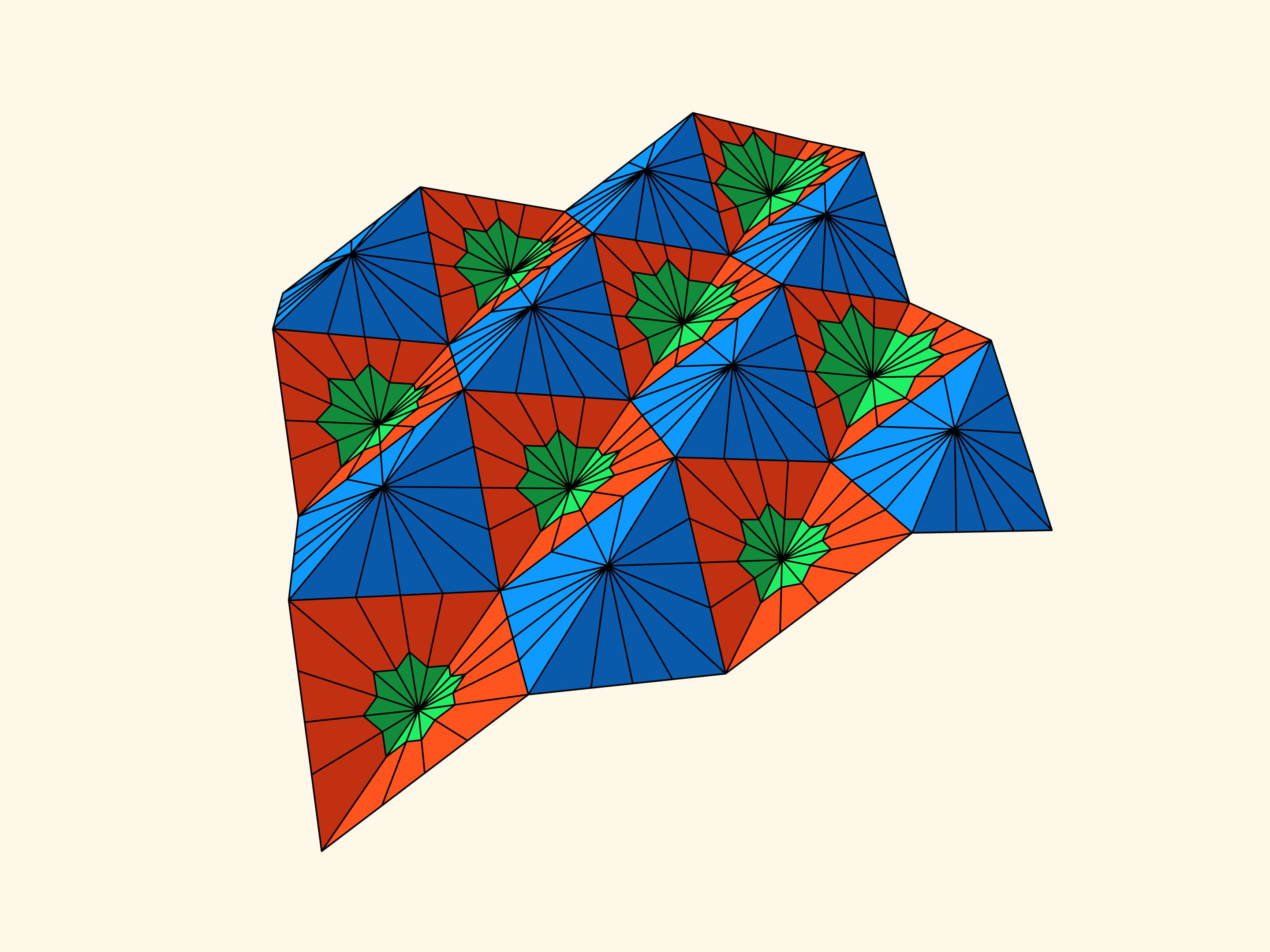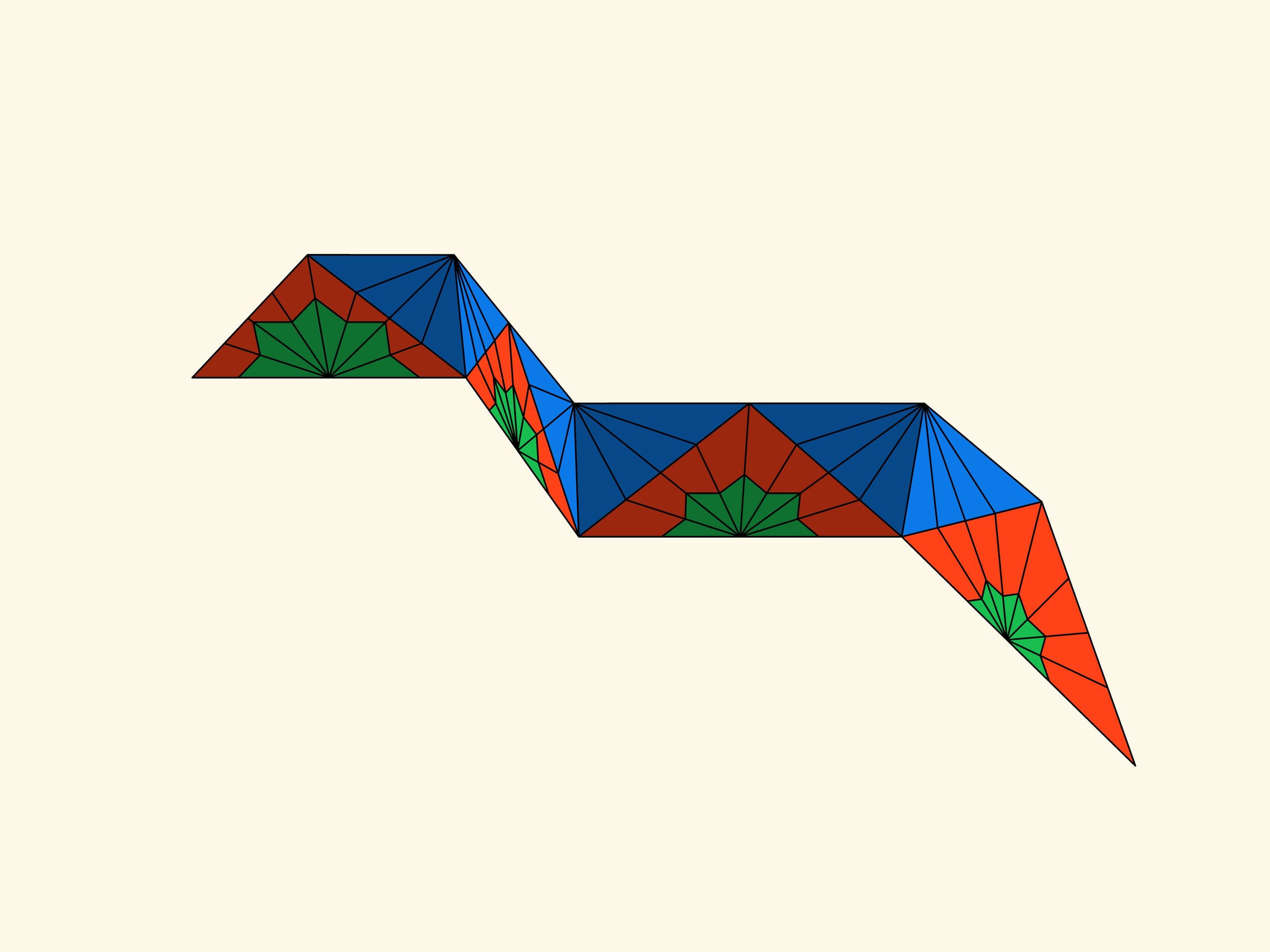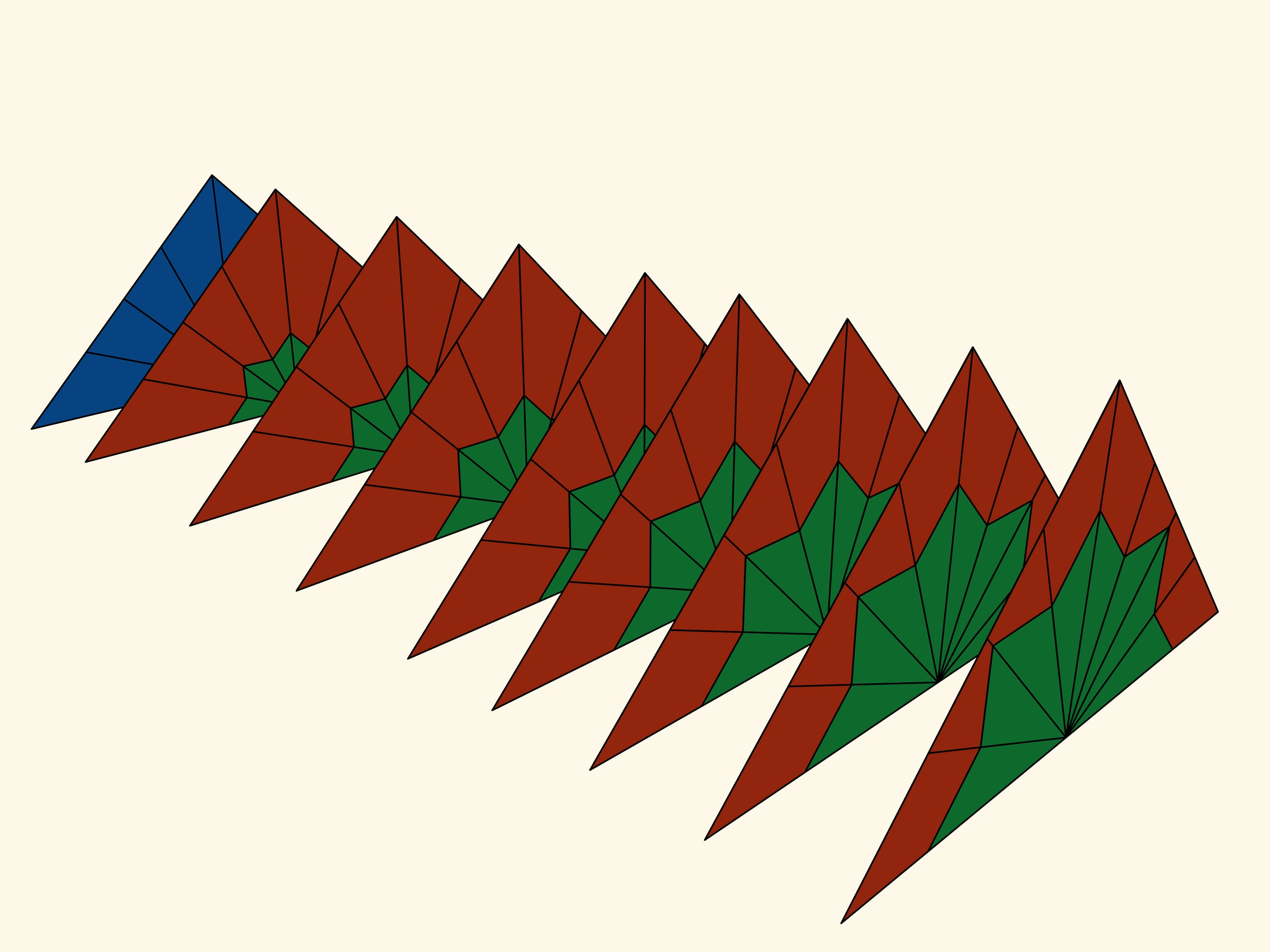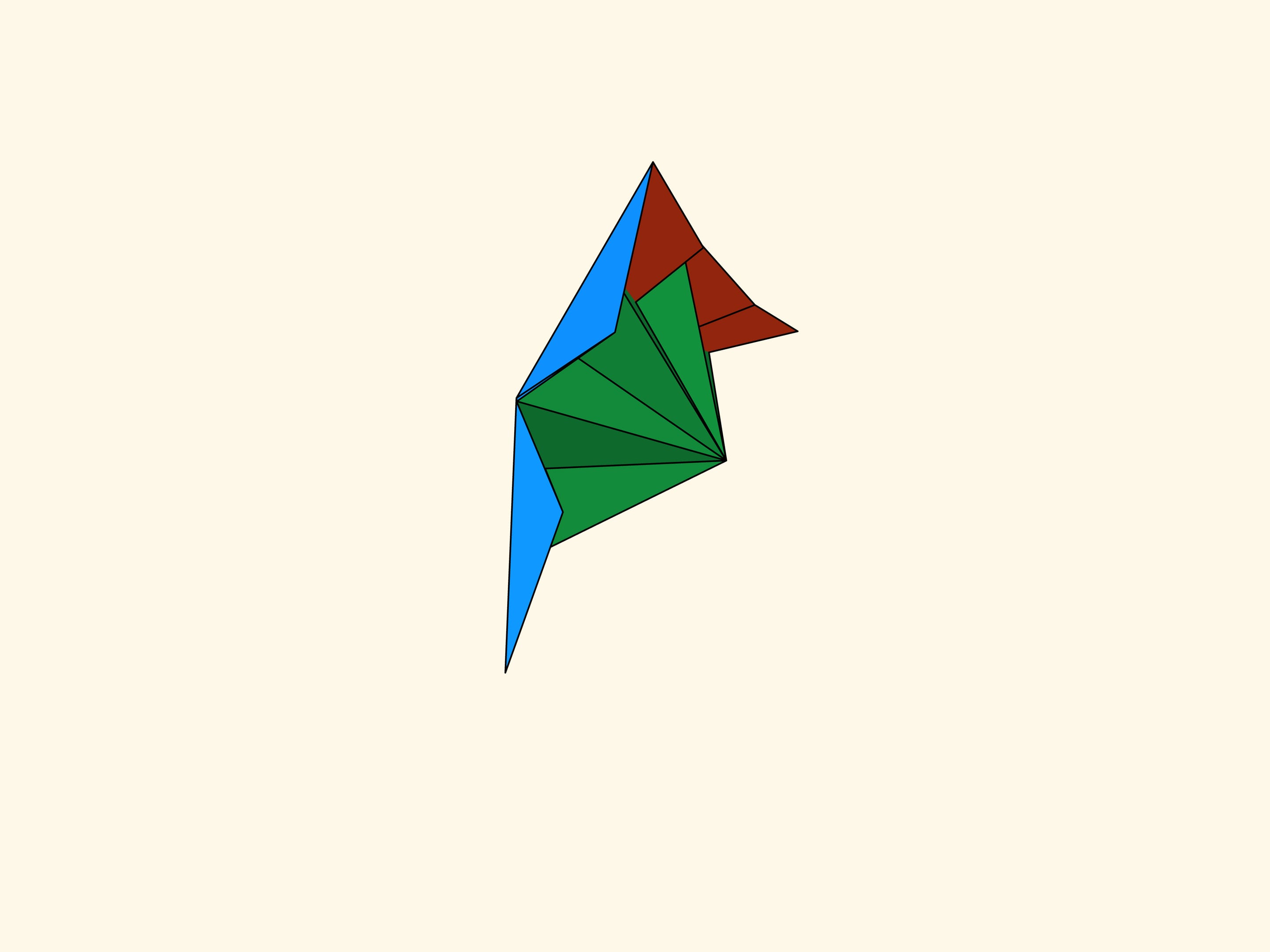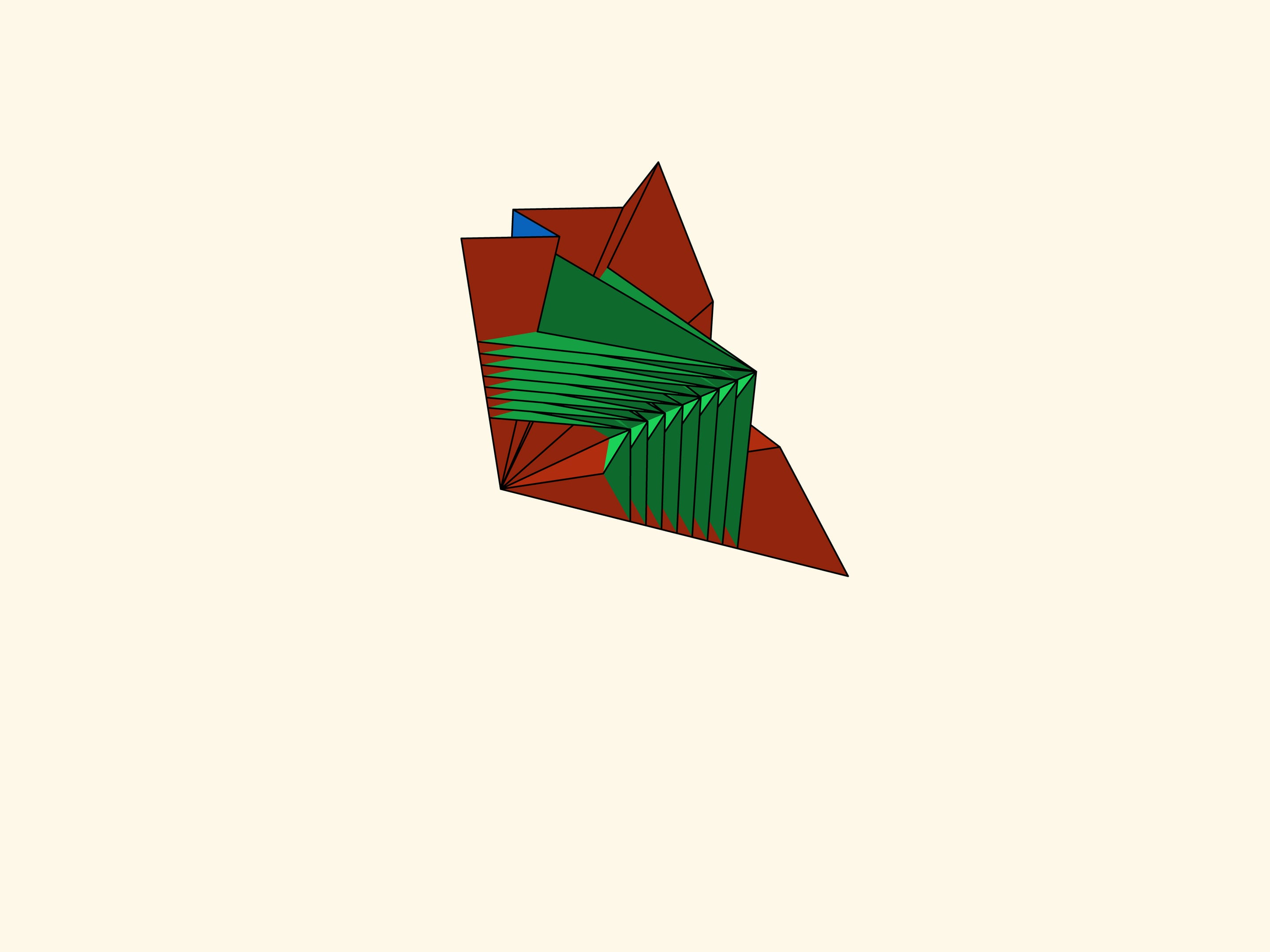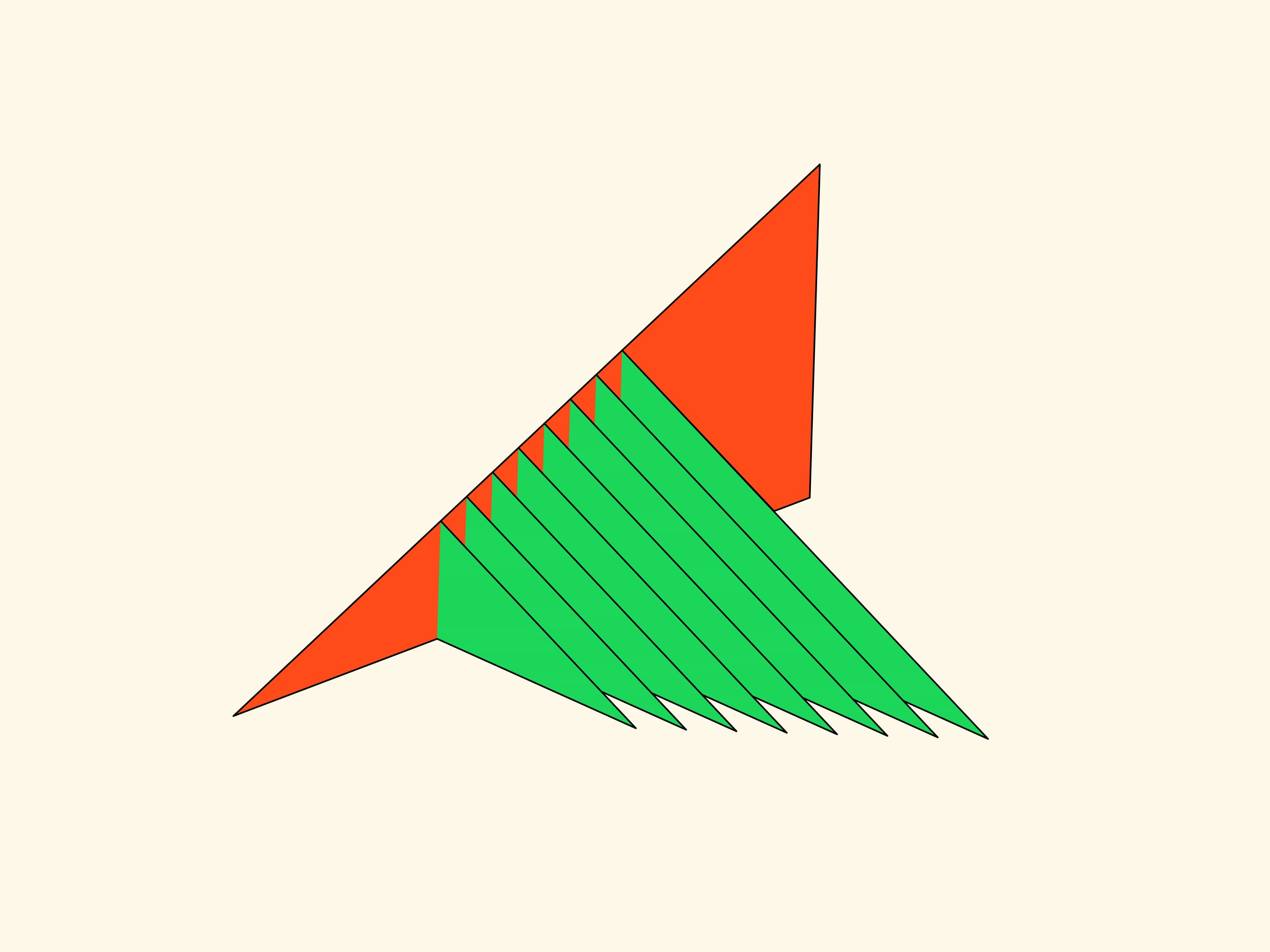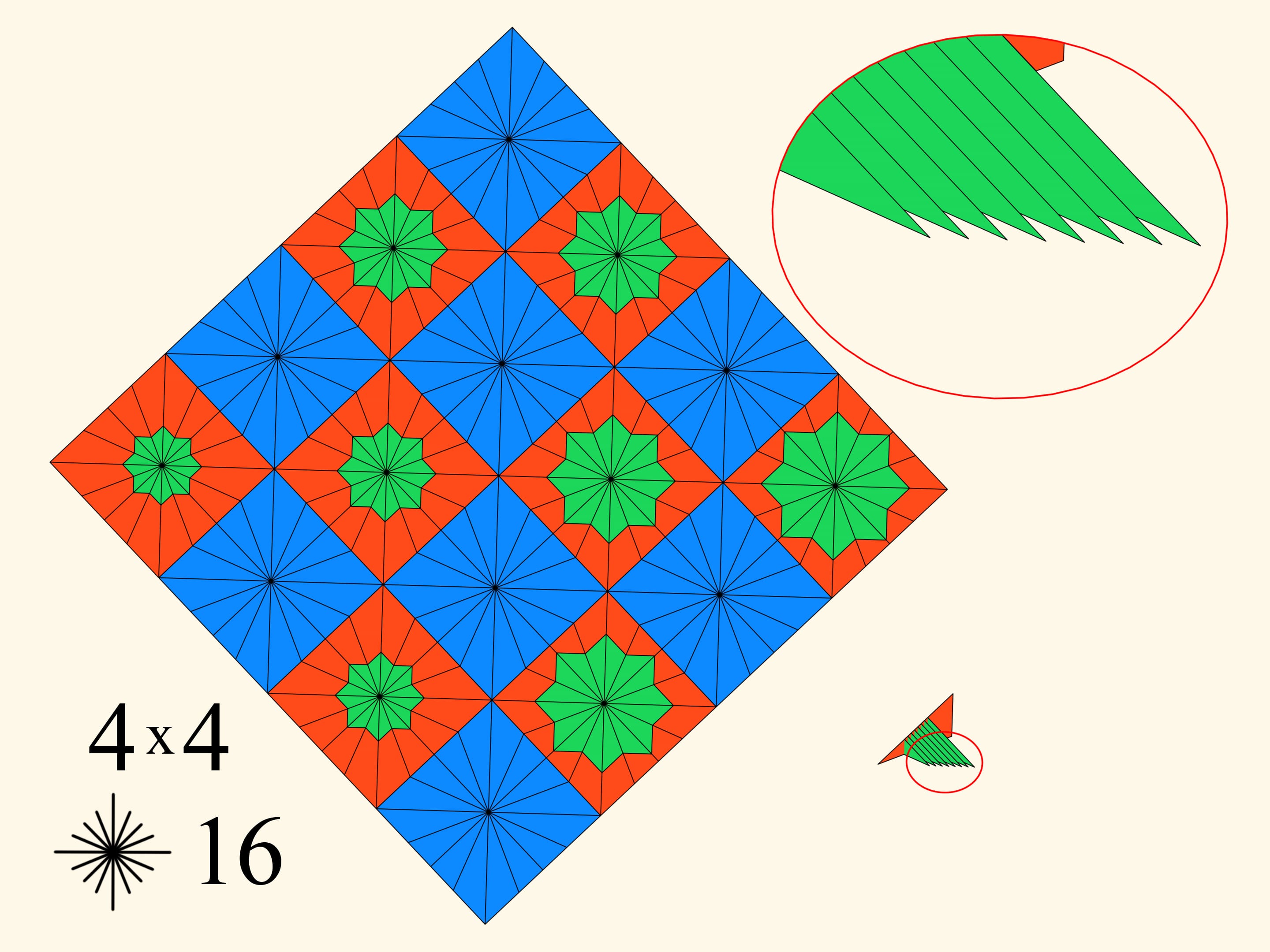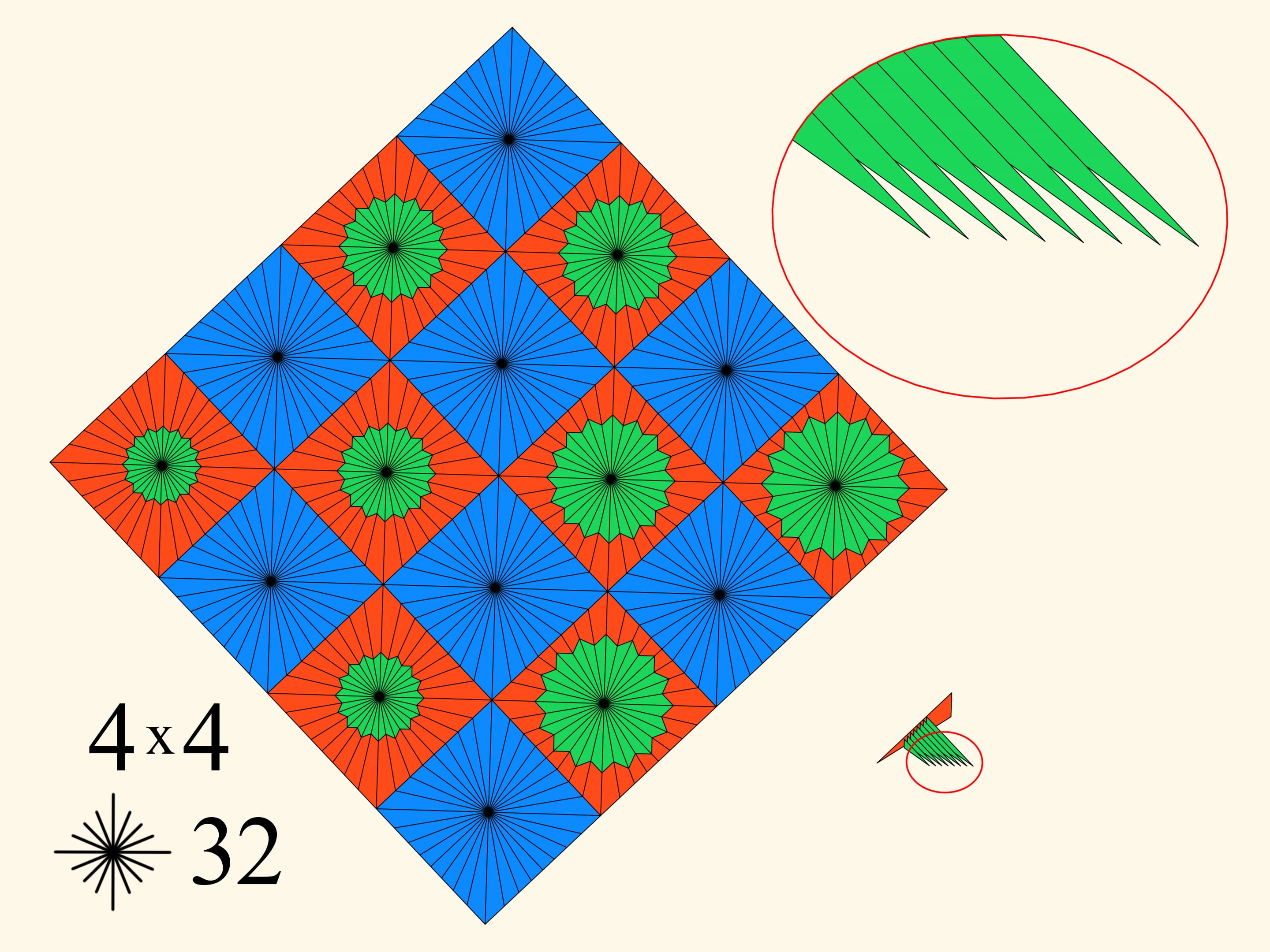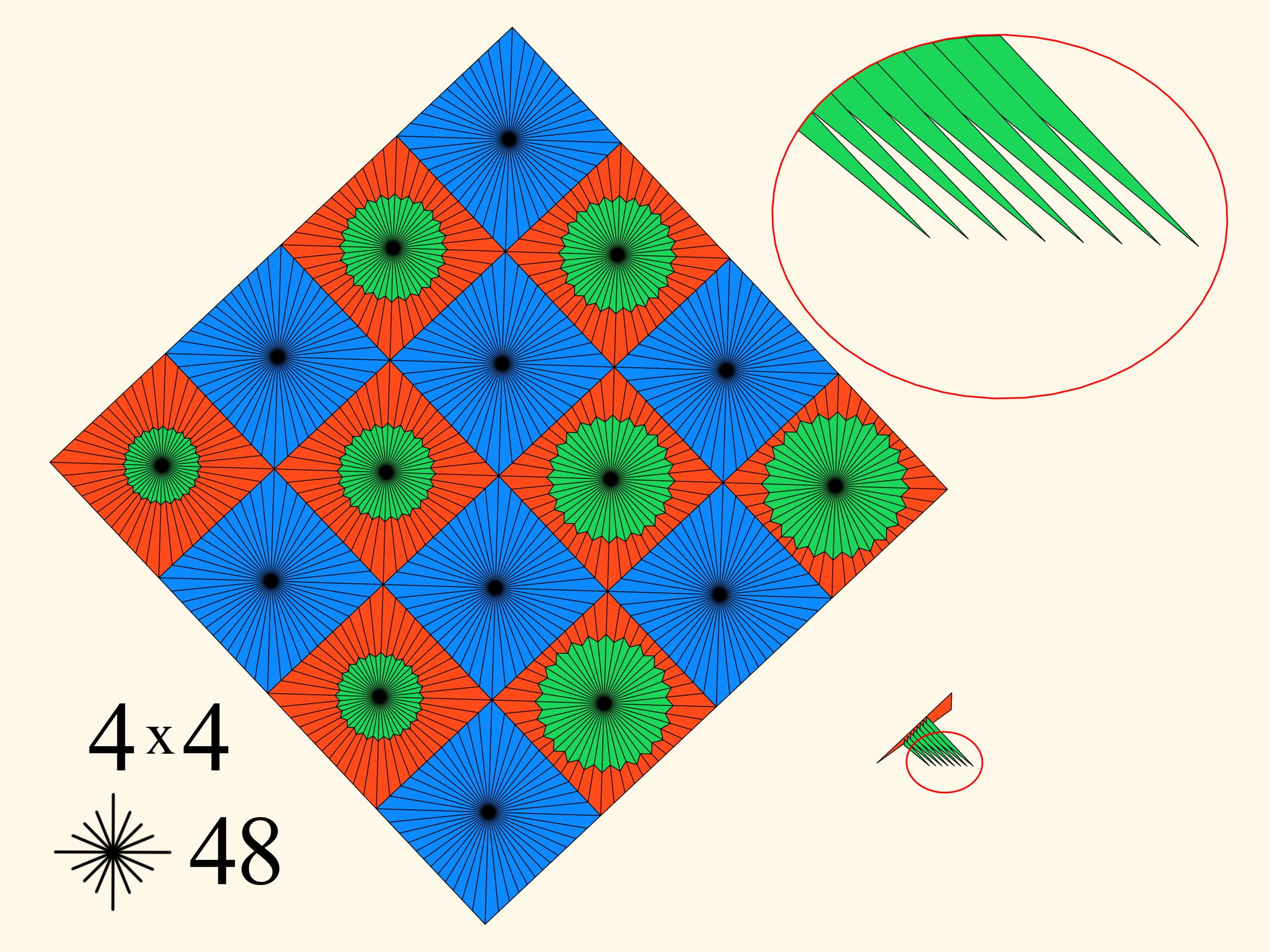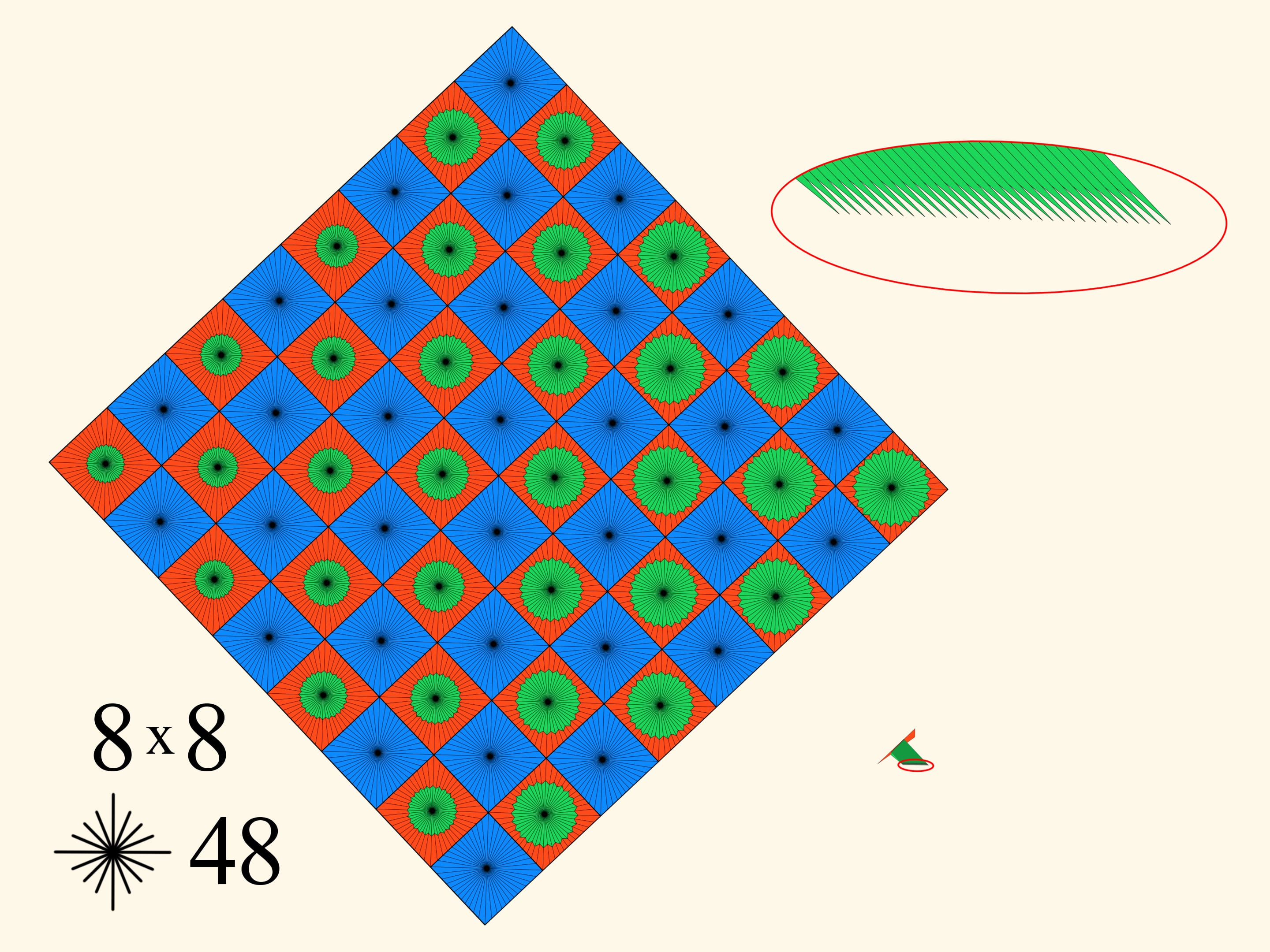After the WW2, in 1947, in the Soviet Union new banknotes were introduced, which were still in circulation in 1956.
In that year, Vladimir Igorevich Arnold posed the problem of the folded rouble. Can you build a planar polygon by folding a sheet of paper (a rouble bill) so that the perimeter of this polygon is larger than the perimeter of the original sheet?
In 1961 in Russia the coins and banknotes changed again, so that also the design of the rouble changed, becoming a much smaller piece of paper. At that time, however, the problem was not resolved.
Furthermore, although a positive answer “It is possible” contradicts the intuition, there must be a mathematical reason for a negative answer. If we fold a rectangle along a straight line, then the perimeter can only be reduced: to the already existing edge we have to add the segment of the line along which we have folded, but we have to remove a broken line that has the same endpoints as that segment. If we do something similar, that is if we fold again the obtained polygon along a straight line, the situation is the same: the perimeter increases by the length of a segment, but decreases by the length of a broken line. This type of folding — along a straight line — is called “simple” and can only decrease the perimeter. This however is only one reason, but not yet proof.
So can we or not increase the initial perimeter of the rectangle? In the years 1991 and 1993, yet the banknotes were changed, and that of the rouble of 1961 came out of circulation. But the Arnold problem still remained unsolved.
Since that time a Russian rouble worth, unfortunately, so little that there are no more notes, but only coins, of that value.
At the beginning of the twenty-first century, however, the problem was solved. The first mathematically rigorous solution was provided by a student of N.P. Dolbilin, Alexei Tarasov. He invented an algorithm for folding a square so that in total you get a planar polygon with a greater perimeter.
Who only wishes to enjoy the movie, can skip the next part, which has been added for those who want to understand well how the sheet has to be folded.
Take a square sheet of paper, and let us divide it into square cells, for example, 4 x 4. Colour the cells with two colours like a chessboard and draw from the centre of each square a defined number of rays. Then add in every red square a green star, so that the size of the stars grow in the direction of one diagonal. Now fold the paper in a strip, and then into a rectangle, and, eventually, into a triangle. The resulting object is done as follows. One half of it contains several blue layers, the other contains red-green layers. The way of drawing the stars was such that after folding they increase in size as one passes from one layer to another. Let us start to fold each triangle so that the parallel blue layers go to one side, and the green and red to the other. We get a surface that eventually is folded again into a planar polygon.
This polygon has one red part (the blue triangles result to be hidden inside) and a green comb. We observe that the number of teeth of this comb is exactly the number of green stars, that is, of red squares that were initially in the square.
But did the perimeter increase, compared to that of the initial square? Is the problem solved? If we compare the figures, we immediately see that the perimeter is decreased. Why then we made such complicated folding?
In the concrete example we have considered, we used a general algorithm. And in this algorithm there are two parameters: the number of cells in the initial square and the number of rays in each square. Let us look at what happens if we change these parameters.
For the same subdivision in 4x4 cells we will increase the number of rays within each cell. This leads to a narrowing of the teeth of the comb, to a lower intersection of them, and consequently, to a moderate growth of the perimeter.
There is still another parameter, the number of cells that fill the initial square. If we increase this parameter, then the comb of the resulting construction will have a bigger number of teeth.
The simultaneous growth of the two parameters, both the number of cells and the amount of rays, gives an increase in the perimeter. But how much it may increase? It results, up to infinity. But this means that at some moment it will exceed the perimeter of the initial square!
The problem of the folded rouble — to fold a rectangle so that its perimeter increases — is solved. But how many times we need to fold? Rather a lot. From the work of A. Tarasov we can get an estimate: for a square divided in 16x16 cells and 30x16 2 rays in each cell, the perimeter of the obtained polygon will be greater than the perimeter of the initial square.
This cannot be shown in the film, but can it be achieved in reality? Surely you well remember that folding a sheet of paper, albeit very thin, is possible no more than 7-8 times. If you do not do this for a long time, try that with a simple experiment. So, what the same problem posed by V.I. Arnold, and its solution with an algorithm “not feasible”, give us? Certainly an instrument of progress in science, which certainly will be useful in future developments.
